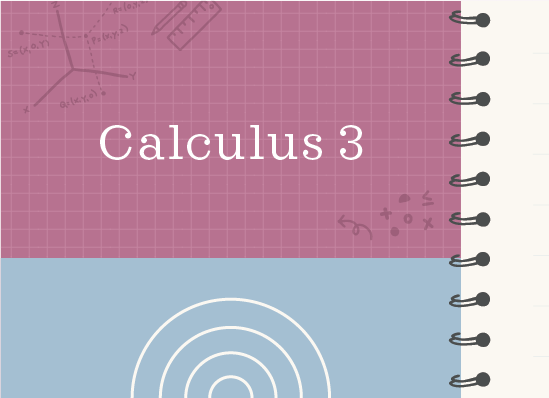How to find the potential function of a conservative vector field
Let’s look at the formulas we’ll use for the potential function
A vector field ???F??? is called conservative if it’s the gradient of some scalar function, that is, if there exists a function ???f??? such that
???\bold{F}=\nabla f???
In this situation ???f??? is called a potential function for ???F???.
Hi! I'm krista.
I create online courses to help you rock your math class. Read more.
Showing that a vector field is conservative
Given a vector field
???\bold{F}(x,y)=P(x,y)\bold{i}+Q(x,y)\bold{j}???
???F??? is conservative if
The domain of ???F??? is open and simply-connected, and
The scalar curl of ???F??? is ???0???
Open and simply-connected
The domain of ???F??? is open and simply-connected if ???F??? is defined on the entire plane ???R^2???. If the domain of ???F??? is ???R^2???, then the domain of ???F??? is open, such that it doesn’t contain any of its boundary points, and the domain of ???F??? is simply-connected, such that it’s connected and contains no holes.
Scalar curl
The scalar curl of ???F??? is ???0???, which means that
1. ???\frac{\partial P}{\partial y}=\frac{\partial Q}{\partial x}???
This also implies that
???\frac{\partial P}{\partial y}-\frac{\partial Q}{\partial x}=0???
and
???\frac{\partial Q}{\partial x}-\frac{\partial P}{\partial y}=0???
2. Because ???\partial P/\partial y??? must be equal to ???\partial Q/\partial x???, we should be able to subtract ???P??? from ???Q??? or vice versa and get ???0???. Because the partial derivatives are interchangeable, you’ll sometimes see them written as
???\frac{\partial F_1}{\partial y}=\frac{\partial F_2}{\partial x}???
but with this notation it’s important to remember that we have to take the partial derivative with respect to ???x??? of the function ???Q???, and the partial derivative with respect to ???y??? of the function ???P???.
Whichever notation we use,
???\frac{\partial P}{\partial y}-\frac{\partial Q}{\partial x}\quad=\quad\frac{\partial Q}{\partial x}-\frac{\partial P}{\partial y}\quad=\quad\frac{\partial F_1}{\partial y}-\frac{\partial F_2}{\partial x}\quad=\quad\frac{\partial F_2}{\partial x}-\frac{\partial F_1}{\partial y}\quad=\quad0???
is called the scalar curl of the vector field ???F???.
Line integrals of conservative vector fields
The value of the line integral over the curve ???C??? inside a conservative vector field is always the same, regardless of the path of the curve ???C???. This means that the value of the line integral only depends on the initial and terminal points of ???C???.
This means that we can evaluate the line integral of a conservative vector field using only the endpoints of the curve ???C???, because the line integral of ???\nabla f??? is just the net change in ???f???.
So the theorem that defines the line integral of a conservative vector field says:
Assume ???C??? is a smooth curve defined by the vector function ???r(t)???, with ???a\leq t\leq b???. If ???f??? is a differentiable function whose gradient vector ???\nabla f??? is continuous on ???C???, then
???\int_C\bold{F}\cdot d\bold{r}=\int_C\nabla f\cdot d\bold{r}???
???=f(\bold{r}(b))-f(\bold{r}(a))???
???=f(x_1,y_1)-f(x_2,y_2)???
The theorem shows us that, in order to find the value of the line integral of a conservative vector field, we just follow these steps:
Show that ???F??? is conservative
If ???F??? is conservative, find its potential function ???f???
Evaluate ???f??? over the interval ???[a,b]???, and the answer is the value of the line integral





